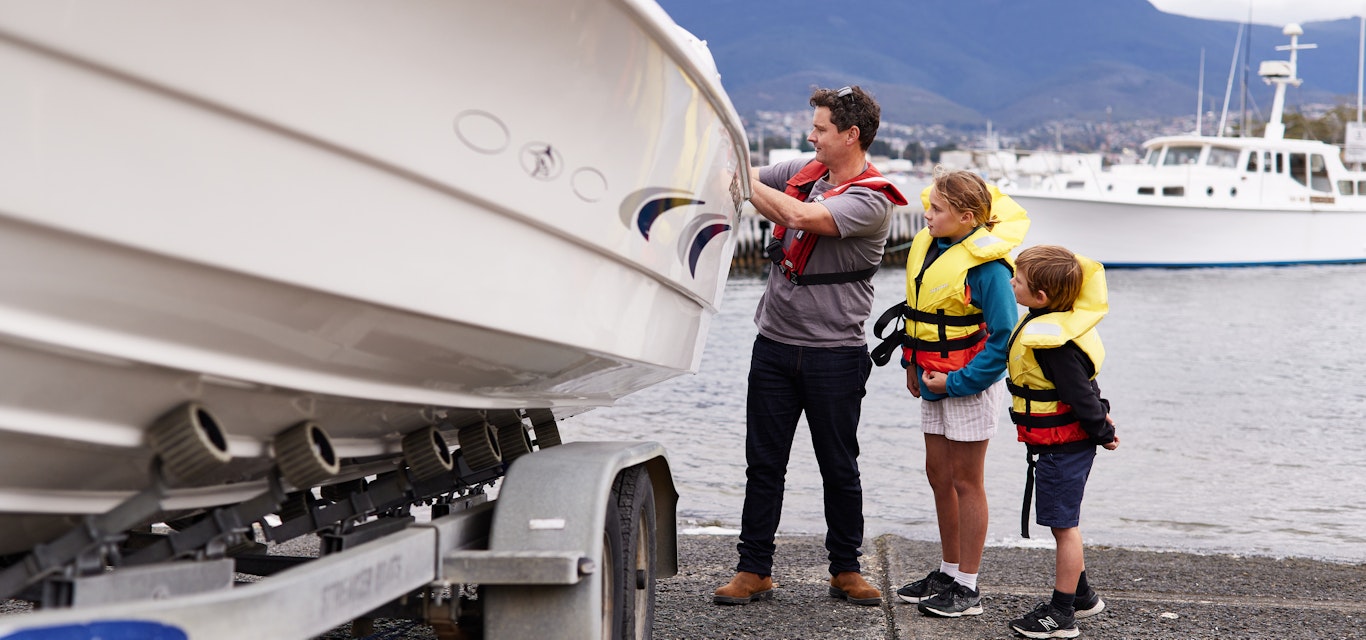Stay safely afloat
Whether you're a seasoned sailor or a novice boater, these top tips for safe boating will ensure a memorable and secure adventure.
Tasmania's pristine waterways offer boat enthusiasts a unique and breathtaking experience. From the rugged coastline to serene inland lakes, the island state boasts a diverse range of boating opportunities. However, safety should always be the top priority when enjoying these waters.
Check weather conditions
Our weather can be unpredictable, with rapid changes in wind and sea conditions. Before setting sail, always check the latest weather forecasts and updates. Pay attention to wind speed, wave height, and any warnings issued by local authorities such as MAST, TasAlert and the Bureau of Meteorology. Postpone your trip if adverse weather conditions are anticipated, and always be prepared for unexpected changes.
Plan your route
Before heading out, plan your boating route and inform someone on land about your plans, including what time you plan to return. Ensure that you're familiar with the waters you'll be navigating, including potential hazards such as rocks, shallow areas, and strong currents. Use navigational charts and GPS devices to stay on course and avoid any surprises.
Carry safety equipment
It's crucial to have the necessary safety equipment on board. This includes life jackets for all passengers, a first aid kit, fire extinguishers, flares, and a waterproof VHF radio. Additionally, consider carrying a personal locator beacon for emergencies.
Understand local regulations
Familiarise yourself with Tasmania's boating regulations and adhere to them diligently. Know the speed limits, no-wake zones, and any specific rules governing the areas you plan to explore. Respect marine life and sensitive ecosystems, and be aware of any seasonal restrictions that may apply.
Keep a proper lookout
Always have a designated lookout on board to watch for other vessels, obstacles, and changing conditions. Be vigilant, especially in busy waterways and near ports. Keep an eye on navigational aids such as buoys and markers, and follow established channels to avoid running aground.
Maintain your boat
Regular maintenance is key to safe boating. Check your boat's engine, hull, and electrical systems regularly. Ensure that fuel, oil, and other fluids are at appropriate levels. If you're not mechanically inclined, schedule professional inspections to catch potential issues before they become safety hazards.
Practice safe navigation at night
If boating after dark, make sure all navigation lights are functioning correctly. Follow the proper colour codes for lights to indicate your vessel's position and direction. Reduce your speed and maintain a heightened level of alertness during nighttime navigation.
Educate yourself
Take advantage of boating safety courses and programs offered in Tasmania. These courses cover essential topics such as navigation, emergency procedures, and local regulations. Staying informed enhances your skills and knowledge, making you a more responsible and capable boater.
Stay sober
Alcohol limits apply when a vessel is operational. Boating under the influence is just as dangerous as driving a car in that condition. Alcohol impairs judgment and coordination, increasing the risk of accidents on the water. Stay sober while operating a boat, and encourage your passengers to do the same.
Respect wildlife and the environment
Tasmania's waters are home to diverse marine life and delicate ecosystems. Maintain a safe distance from wildlife, avoid anchoring in seagrass beds or other sensitive areas, and dispose of waste properly. Practice responsible boating to preserve the beauty of Tasmania's waterways for future generations.
Safe boating in Tasmania requires a combination of preparation, knowledge, and respect for the environment. By following these top tips, boaters can enjoy the breathtaking landscapes and unique experiences that the island state has to offer while ensuring the safety of themselves, their passengers, and the marine environment. Whether you're cruising along the coast or exploring inland lakes, prioritise safety to make the most of your boating adventures.
